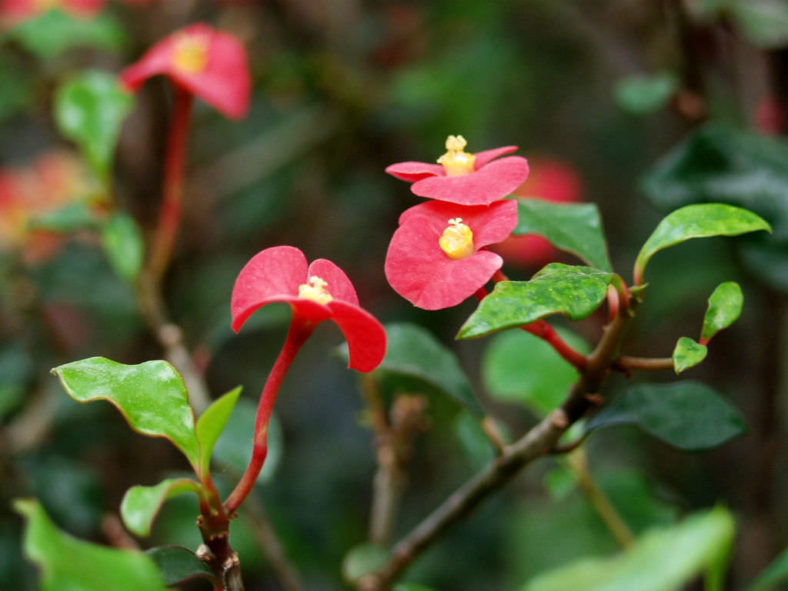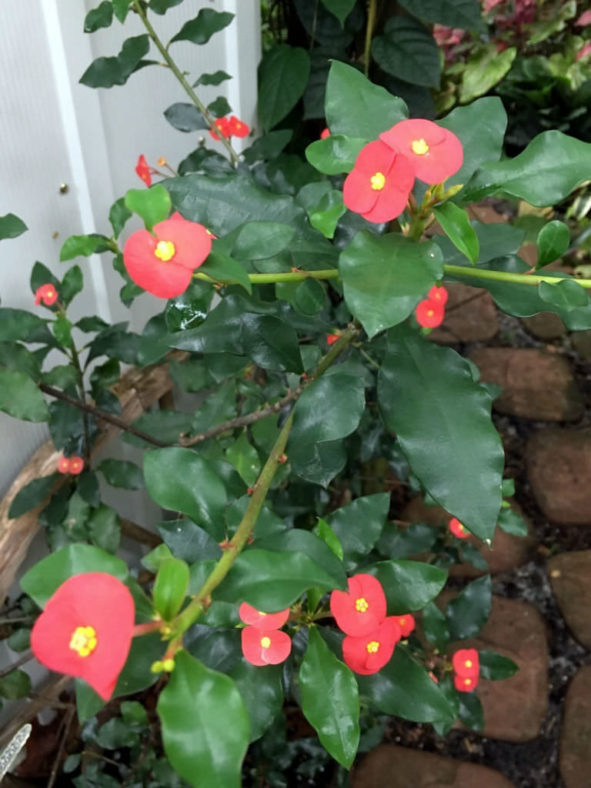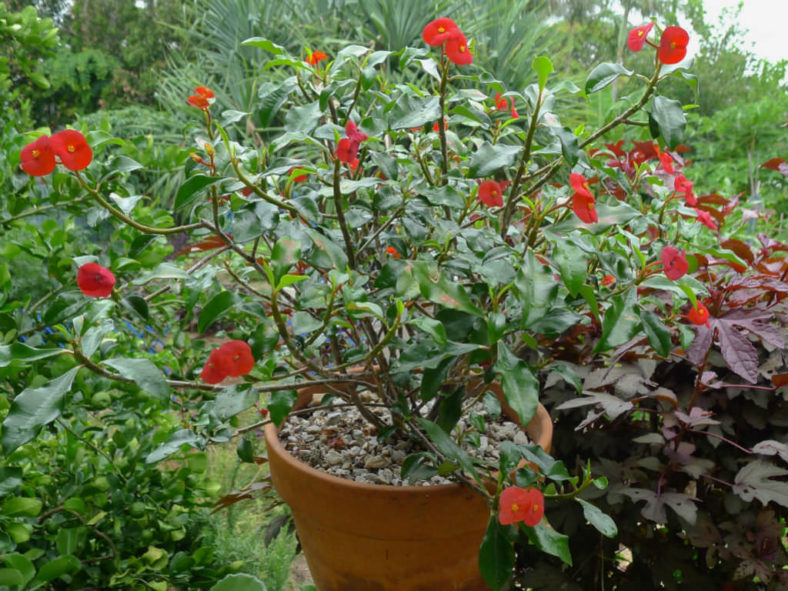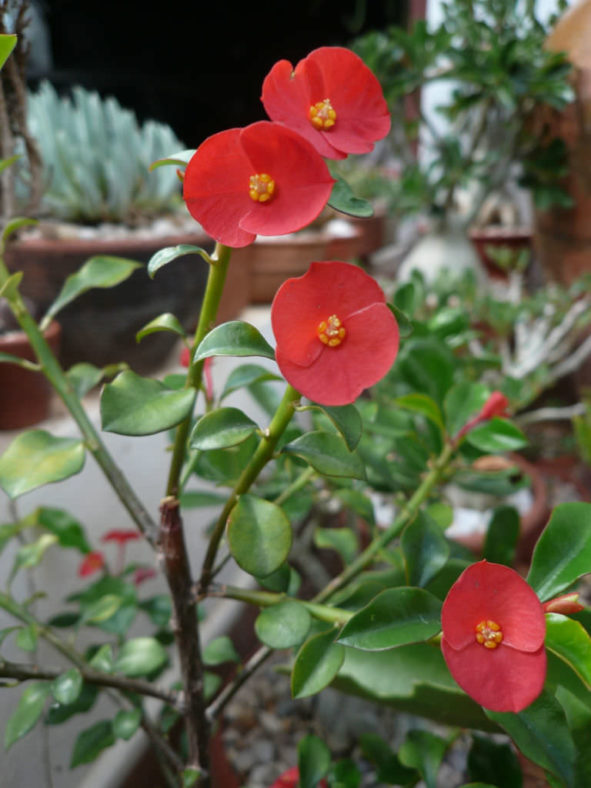Scientific Name
Euphorbia geroldii Rauh
Common Name(s)
Thornless Crown of Thorns, Thornless Euphorbia, Gerold's Spurge
Scientific Classification
Family: Euphorbiaceae
Subfamily: Euphorbioideae
Tribe: Euphorbieae
Subtribe: Euphorbiinae
Genus: Euphorbia
Origin
Euphorbia geroldii is endemic to Madagascar. It grows in subtropical or tropical dry forests and is threatened by habitat loss.
Description
Euphorbia geroldii is a beautiful, semi-succulent shrub with no spines, unlike its thorned cousin, Euphorbia milii. It can grow up to 2 feet (60 cm) tall. The glossy dark green leaves can measure up to 3.2 inches (8 cm) long and 1.2 inches (3 cm) wide.
This plant is almost in constant bloom. The flowers are coral red with a yellow center.

Hardiness
USDA hardiness zones 10a to 11b: from 30 °F (−1.1 °C) to 50 °F (+10 °C).
How to Grow and Care
Euphorbias are very easy to care for. These plants require a little pampering to become established, but once they are, they are self-sufficient. More die from too much care and watering than from neglect. Euphorbias need well-draining soil and lots of sunlight. They are not particular about soil pH but cannot tolerate wet soil. Unlike most succulents, Euphorbia does not handle long periods of drought well. It may need weekly watering during the summer. Water whenever the soil is dry several inches below the surface. Water deeply, but don't let them sit in wet soil, which can cause root rot. Add some organic matter or fertilizer to the planting hole. If you grow them in containers or your soil is poor, feed them with a half-strength fertilizer monthly.
These succulents can be grown from seed, but they can be difficult to germinate (or even find). They are usually propagated by cuttings. This can be tricky because of the exuding sap. Rooting hormone is recommended with Euphorbias. They tend to grow problem-free, but a few pests and diseases are to be alert for.
Learn more at How to Grow and Care for Euphorbia.
Links
- Back to genus Euphorbia
- Succupedia: Browse succulents by Scientific Name, Common Name, Genus, Family, USDA Hardiness Zone, Origin, or cacti by Genus
Photo Gallery
Click on a photo to see a larger version.


